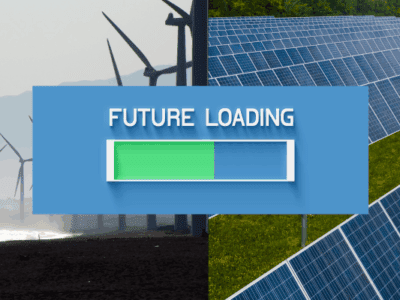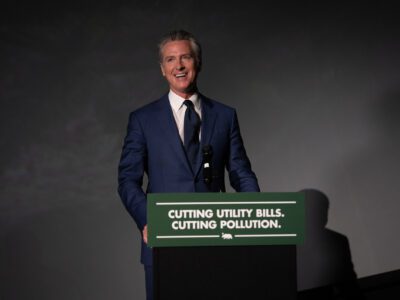What Will 2025 Bring in Global Climate Finance?
Last year, international negotiations continued to disappoint on global climate policy, forests, and finance. This year, subnational governments must continue to lead.
As they have for many years, nations came together in 2024 at various climate-related events to push for a brighter future. From the 16th Conference of the Parties (COP) to the Convention on Biological Diversity in Cali, Colombia in October 2024, followed immediately by COP29 to the United Nations Framework Convention on Climate Change (UNFCCC) in Baku, Azerbaijan, country negotiators hammered out language to advance the protection of and financing for the world’s species, lands, forests, and climate.
From my early days studying international environmental law, I have been a believer in the importance of multilateral partnerships and international treaty negotiations. They are unparalleled spaces for tackling global challenges and developing technical rules, guidelines, and joint international research efforts. They also offer a unique venue for maintaining pressure amongst and between countries to increase action and financing to protect the environment. And, having seen the amount of work involved inside and outside of various COPs, I am in awe of the passion and efforts negotiators bring to the table to try to help us all. These efforts – in my view – must continue.
And yet, 2024 was the hottest year on record (beating out the previous record from 2023). And the initial promise that both COP16 and COP29 would result in increased (and long-awaited) climate and biodiversity finance has not materialized. As the charismatic climate envoy for Panama, Juan Carlos Monterrey Gomez, remarked, “the outcome of COP29 is nothing short of heartbreaking.”
So where does that leave us? Do we abandon the COP process – especially given the likely withdrawal from the Paris Agreement by the incoming Trump Administration – as some have argued? Or, as I believe, should we enhance our focus on other key actors in driving climate progress and policy and maintain the pressure on national delegations to catch up at future COPs?
Subnational Governments as Key Climate and Biodiversity Actors
Looking for Biodiversity Finance…
COP16 negotiators had initially sought to secure substantial financing to support biodiversity initiatives, including through a new “Cali Fund.” There were important agreements achieved at COP16, including creating the Cali Fund voluntary fee structure for industrial entities utilizing digitized genetic sequencing information and increasing inclusion of and financing to Indigenous Peoples and local communities. However, negotiators failed to conclude with any larger financial pledges, partly due to the absence of a quorum as negotiations sprawled into overtime and many delegations had to return home to prepare for COP29. The COP was ultimately suspended without resolution, though negotiators have indicated they hope to consider a “new Strategy for Resources Mobilization” to secure $200 billion annually, while simultaneously reducing $500 billion per year in harmful incentives, by 2030.
At the same time, states, provinces, and cities attending COP16 presented their own efforts – including their own budgets, financing needs, and plans – to protect forests and biodiversity. These subnational actors, including the Governors’ Climate and Forests Task Force (GCF Task Force), California (a GCF Task Force founding member), Regions 4, and ICLEI, are often the closest to the ground in terms of enacting programs to protect species and working directly with communities to implement these programs.
So, while one can hope that international negotiations on significant biodiversity financing will recommence and conclude prior to COP17 (scheduled for 2026), these subnational actors – together with Indigenous Peoples and local community organizations – will have to continue to lead on the ground.
What about Climate Finance?
Likewise, COP29 saw progress on a number of fronts. As my colleague Juan Pablo Escudero wrote, more countries joined the global methane pledge while in Baku. And, for carbon market enthusiasts, additional clarity emerged around Article 6 international market transactions, which may result in increased opportunities for private sector funding at both the national and subnational levels. See here for an analysis of additional points of progress.
But, COP29 also failed to deliver on the specific needs expressed by the Global South from a financial perspective. Developing countries had requested annual support of $1.3 trillion, a big ask for sure, but a necessary amount according to a High-Level Expert Group on Climate Finance. Instead, negotiators settled on $300 billion, a fraction of the requested amount. This result also drudged up concerns based on past experience with the time it took to meet an earlier pledge of contributing $100 billion in additional financing by 2020, and the accuracy of whether contributions were truly “new and additional.”
COP29 also saw subnational governments continuing to show up and demonstrate their plans and opportunities that exist today to invest in action on the ground. As I’ve written previously (here), the GCF Task Force shared its ambitious Blueprint for a New Forest Economy, which would stack public and private financing sources both domestically (think state-level budgets and rural development banks) and internationally (think private sector and multilateral development banks) to truly advance action.
California – in the face of devastating wildfires and uncertainty on the total scale of damages – released its preliminary budget last week outlining how Governor Newsom envisions leveraging existing and new funding sources to accelerate actions to tackle climate change and build resiliency, including through the use of funds resulting from the state’s carbon market. (See here for the Budget’s Climate and Environment Summary). While the final version of the budget will not be known until June 15, it shows the types of ambition, tradeoffs, and uncertainties that subnational governments face and on which they must continue to make progress. For key takeaways of this preliminary budget, see this great post from Julia Stein.
Looking ahead
Regardless of the successes and failures of COPs, state and provincial leaders – as well as the communities they serve – will continue to be at the forefront of the climate and biodiversity crises. They have demonstrated that they will continue to take action – both as leaders, but also because they must. Increasing support for subnational governments as a means to ramp up pressure on national governments, and to enable them to continue serving as a backstop when national governments and multilateral processes stall or retract, is (to put it bluntly) smart climate policy.
For GCF Task Force members, the urgency of action and the immediacy of ready-to-fund opportunities to build a new forest economy will help us shape our next Annual Meeting in Rio Branco, Acre, Brazil in May 2025. This convening will be a key moment on the road to COP30 (scheduled to be in Belém do Pará, Brazil in November) to demonstrate that subnational, jurisdiction-scale climate and forest programs are not only continuing to advance, but that such programs are essential for the world to meet our climate, biodiversity, and development goals.







Reader Comments